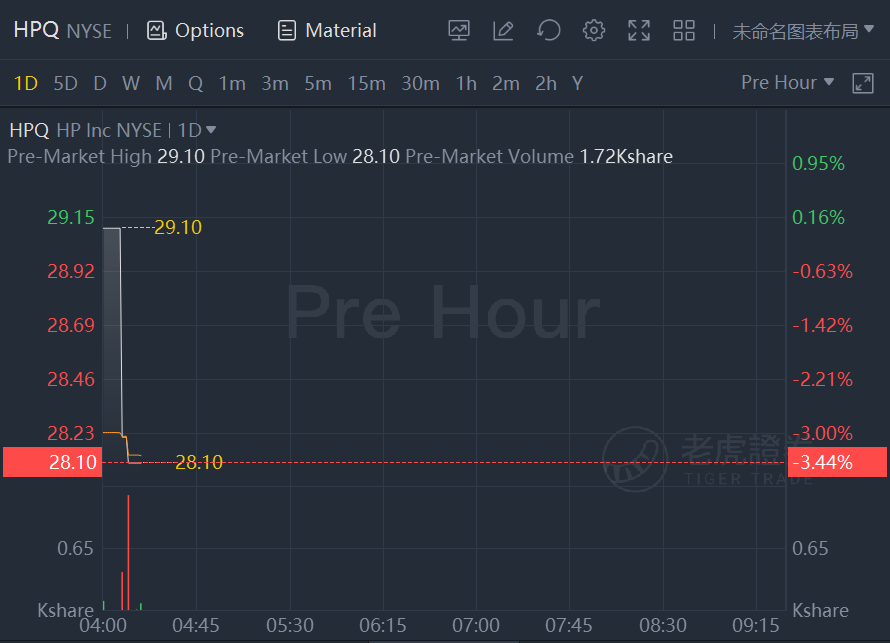HP stock slipped 3.4% in premarket trading on quarterly revenue missed the mark.
HP Inc. posted mixed results for its latest quarter, with better-than-expected profits offset by a substantial top-line miss, as the PC and printer company struggled to meet demand in the face of ongoing chip shortages.
For its fiscal third quarter ended July 31, HP (ticker: HPQ) reported revenue of $15.3 billion, up 7% from a year ago, but well shy of the Street consensus forecast of $15.9 billion. The total was down from the April quarter, when HP reported $15.9 billion in revenue, up 27.3%.
HP CEO Enrique Lores said in that revenue would have been higher if the company had enough components to meet demand. The issue isn’t processors or memory, the CEO saod, but instead relatively low-cost integrated circuits like controllers. The problem is likely to persist at least into early 2022, he added.
HP exited the quarter with a backlog equal to a full quarter of demand, he said, adding that backlog is now “an order of magnitude higher than anything we’ve experienced before” in terms of both units and revenue.
“We are selling everything we can produce,” he added.
Non-GAAP earnings were $1 a share, well ahead of both the guidance range of 81 to 85 cents a share and the Street consensus at 84 cents, although the total included 13 cents a share in one-time gains that weren’t reflected in the company’s forecast. HP said that gain reflects “a reduction in previously estimated sales and marketing program incentives,” partially offset by discretionary investments in R&D, marketing and investments in the company’s hybrid work strategy. Backing out those gains, profits beat the midpoint of consensus by 4 cents a share.
Under generally accepted accounting principles, the company earned $1.1 billion, up 57% from a year ago, or 92 cents a share. Non-GAAP operating margin jumped to 9.8% from 6.1%.
For the fiscal fourth quarter, HP projects non-GAAP earnings of 84 cents to 90 cents a share, ahead of the Street consensus at 81 cents. For the full year ending in October, HP now sees earnings of $3.69 to $3.75 a share, up from a previous forecast range of $3.40 to $3.50 a share. The updated forecast in part reflects the previously mentioned one-time gain. HP does not provide guidance on revenue.
HP said personal systems revenue—its PC business—posted revenue of $10.4 billion in the July quarter, short of the Street consensus forecast of $10.9 billion, and flat year over year. That includes a 3% increase in consumer revenue, with a 1% decline in commercial revenue. Overall units were flat, with notebooks up 2% and desktops down 7%.
Lores says the company is seeing a shift in demand toward commercial PCs, although he expects an acceleration in consumer PCs when Microsoft launches Windows 11, likely later this year. He says Chromebook demand weakened in the quarter (note that Chromebooks are included in the commercial segment), with many school districts pausing on investment because of uncertainty around the pandemic. But he expects another wave of Chromebook investments by schools starting at the end of the current quarter or early in the next quarter.
Printing revenue was $4.9 billion, up 24% from a year ago, but slightly below Street forecasts at $5.1 billion. Hardware units were down 4%, reflecting a 9% drop in consumer printers and a 29% increase in commercial printers. Supplies revenue rose 20%. Lores notes that HP has reached the 10 million subscriber mark for its Instant Ink consumer subscription service for printer consumables.
The company bought back $1.5 billion of its common stock in the quarter, fulfilling a vow to spend at least $1 billion a quarter on stock repurchases.

Comments